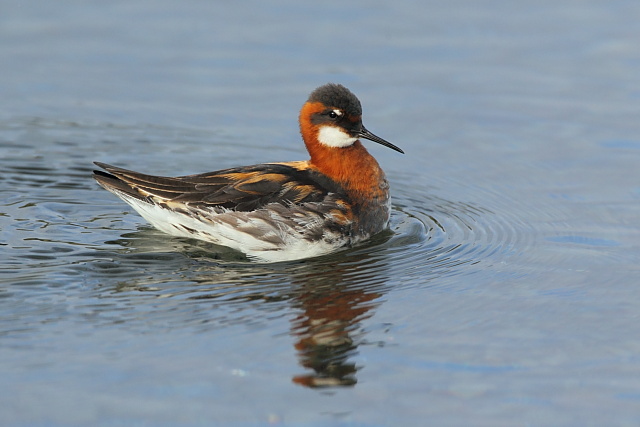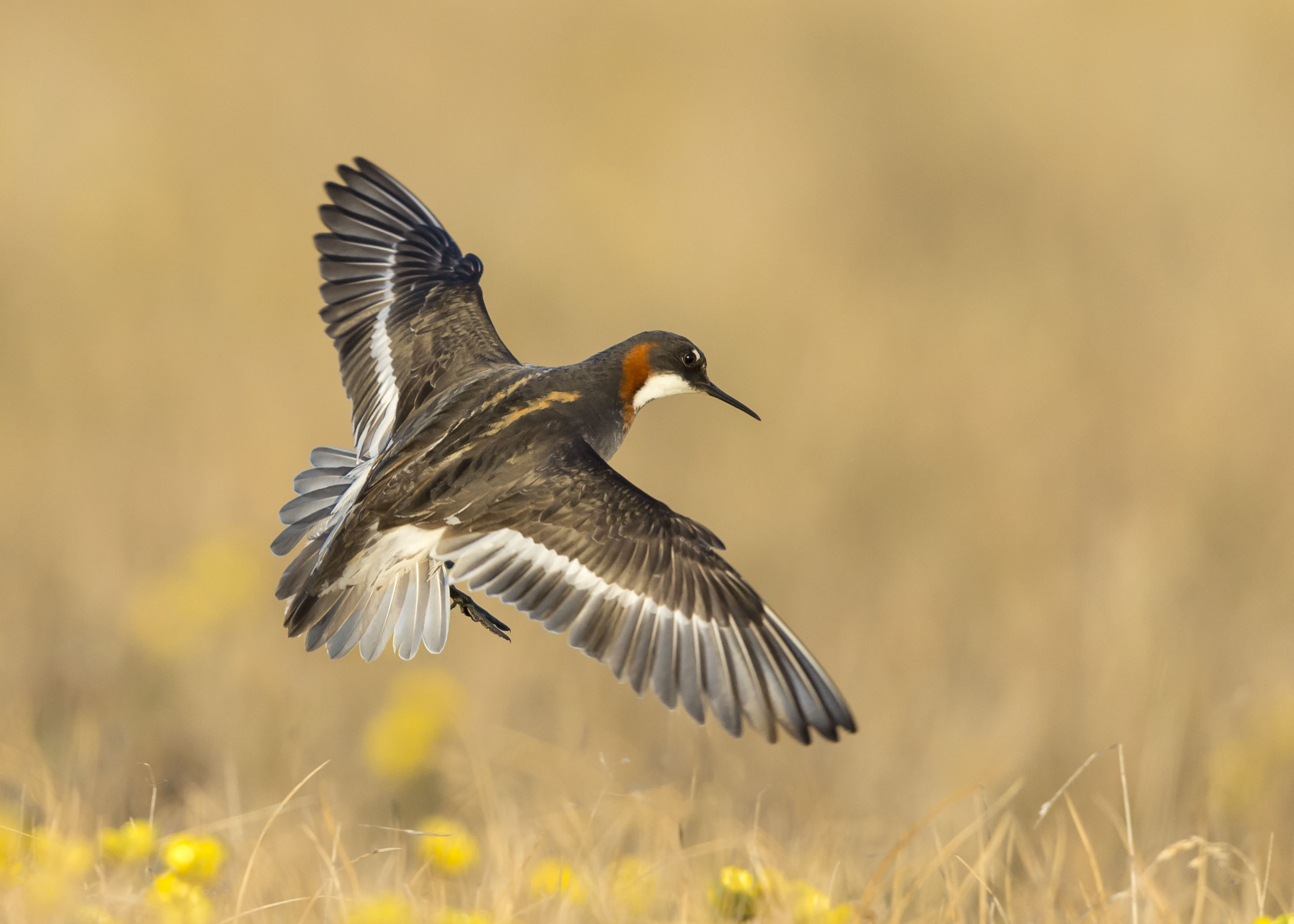Record year as Red-necked Phalarope returns to the Uists
A pair of Red-necked Phalarope has fledged young at Balranald RSPB, Outer Hebrides, while record numbers of breeding birds have been logged on Fetlar, Shetland.
The species is a delicate wading bird, well known for its reversed gender roles where the small, drab male is solely responsible for incubating eggs and caring for the chicks. Red-necked Phalarope migrates to the Western and Northern Isles of Scotland during the summer, but disappeared completely from the Uists as a breeding bird in the mid-1980s. However, a survey this year found a breeding pair at Balranald.

Red-necked Phalarope (Photo: Lewis Thomson).
Jamie Boyle, RSPB Scotland's Balranald Site Manager, said: "Balranald is already a fantastic place for wildlife with its Corncrakes, bees and waders, but to have the Phalaropes back this year made it extra special and I hope to see them return next year."
Red-necked Phalaropes are doing well elsewhere in Scotland too, with record numbers counted in two locations on Shetland — the species' British stronghold — and particularly the island of Fetlar, where RSPB Scotland manages wetlands for these birds. The number of breeding males on Fetlar has increased from only six in 2008 to 36 in 2015, equalling the highest number that has ever been recorded on the reserve. Shetland as a whole was home to a total of 60 breeding males this year — 20 more than the previous record of 40 in 1996.
Malcie Smith, RSPB Scotland Species and Habitats Officer for Shetland, said: "It was so exciting to see that many Phalaropes about for the very short summer season. It's very satisfying that our work here is paying off and that birds are now breeding in record numbers."
A traditional breeding area in Argyll also had its best year on record with six males present, and at least three broods being observed in August. The site — the most southerly for breeding Red-necked Phalaropes in Britain — was reoccupied in 2009 but was only used by two males annually until 2014.
Meanwhile, one of the colour-ringed birds that fledged from Fetlar RSPB this summer has been reported in southern France, and is only the second ever ringing return of a phalarope from Shetland.

Red-necked Phalarope (Photo: Tom Ingram)
It isn't the most far afield ringing recovery, however. Until 2013, the wintering location of Shetland's phalaropes was a mystery and it was assumed they went to the Arabian Sea like those that breed in Scandinavia. In 2012, tiny geolocators were attached to phalaropes in Shetland by RSPB Scotland, working in collaboration with the Swiss Ornithological Institute and the Shetland Ringing Group. One was recovered the following year at a remarkable distance: it had migrated to the Pacific Ocean and spent the winter in the waters between the Galapagos Islands, mainland Ecuador and Peru. This epic return journey of 16,000 miles had never been recorded for a European breeding bird before.
Ten more tags were deployed by RSPB Scotland in 2015 to consolidate these findings. The ringing recoveries add to the wildlife charity's ever-growing understanding of Red-necked Phalarope, which will help in the work to increase populations of this species further.

